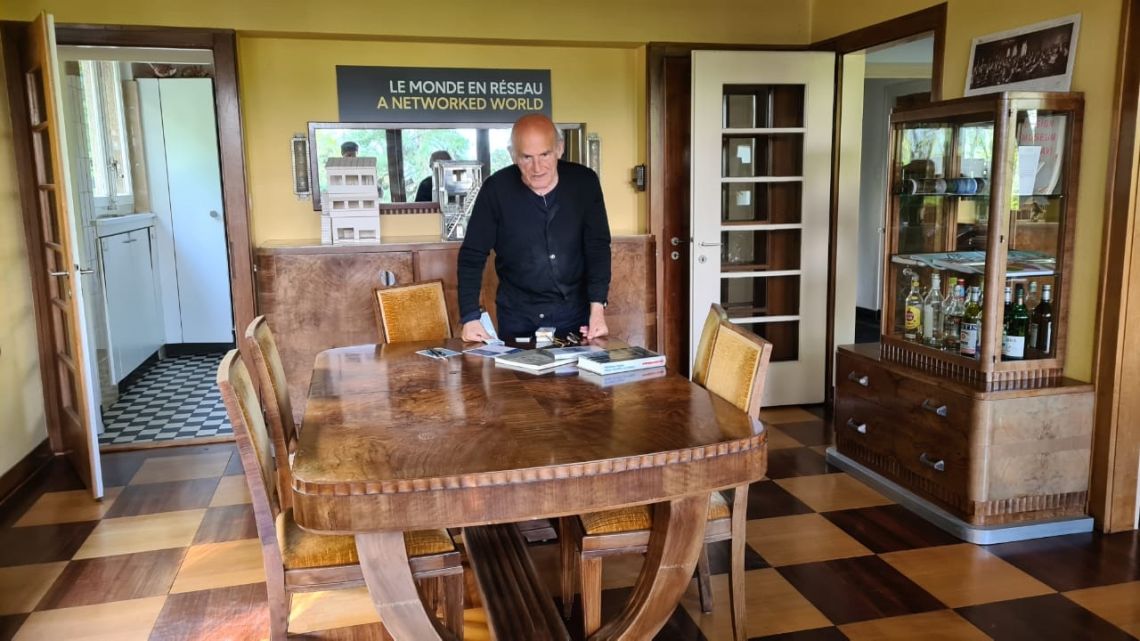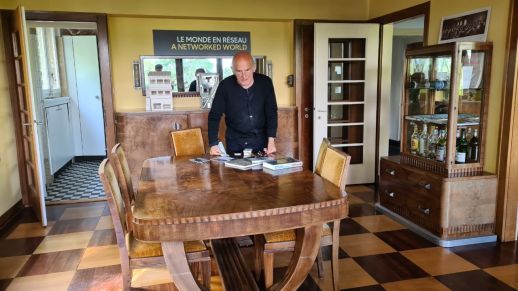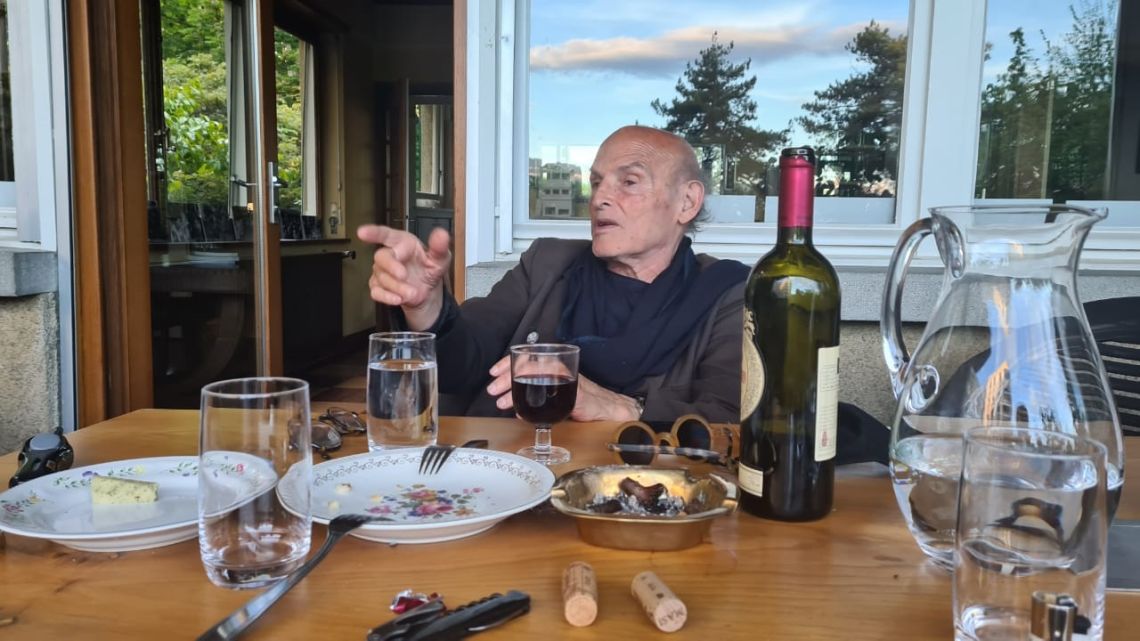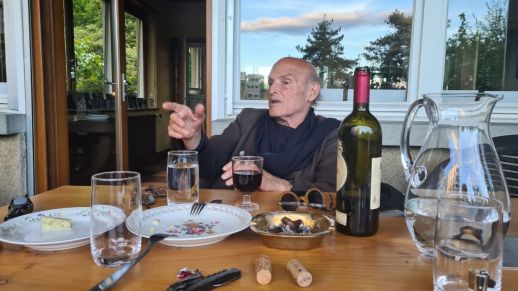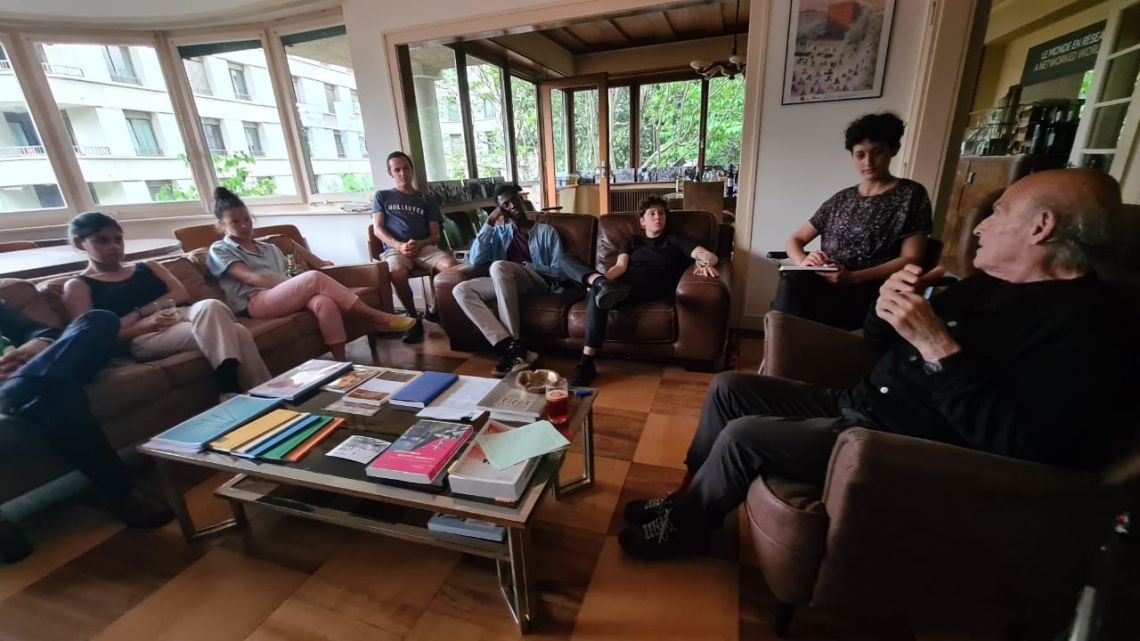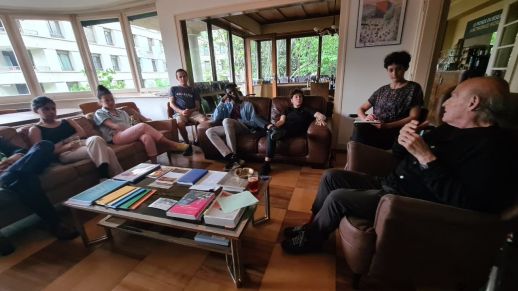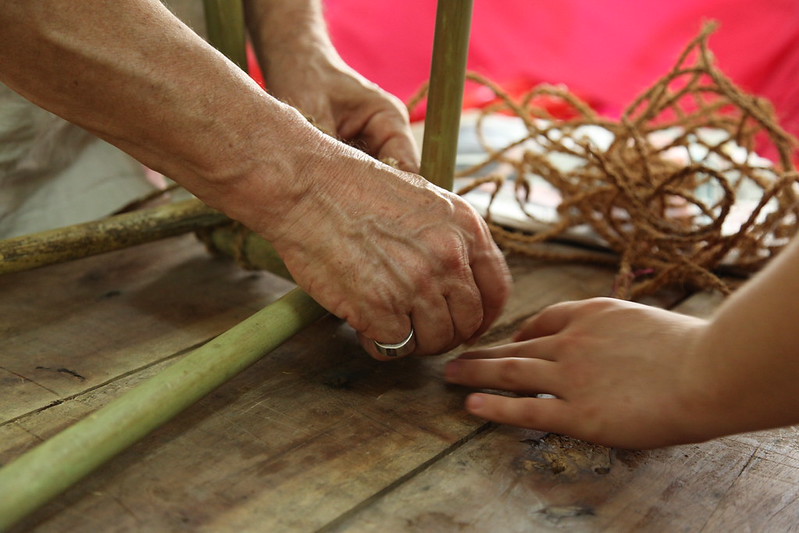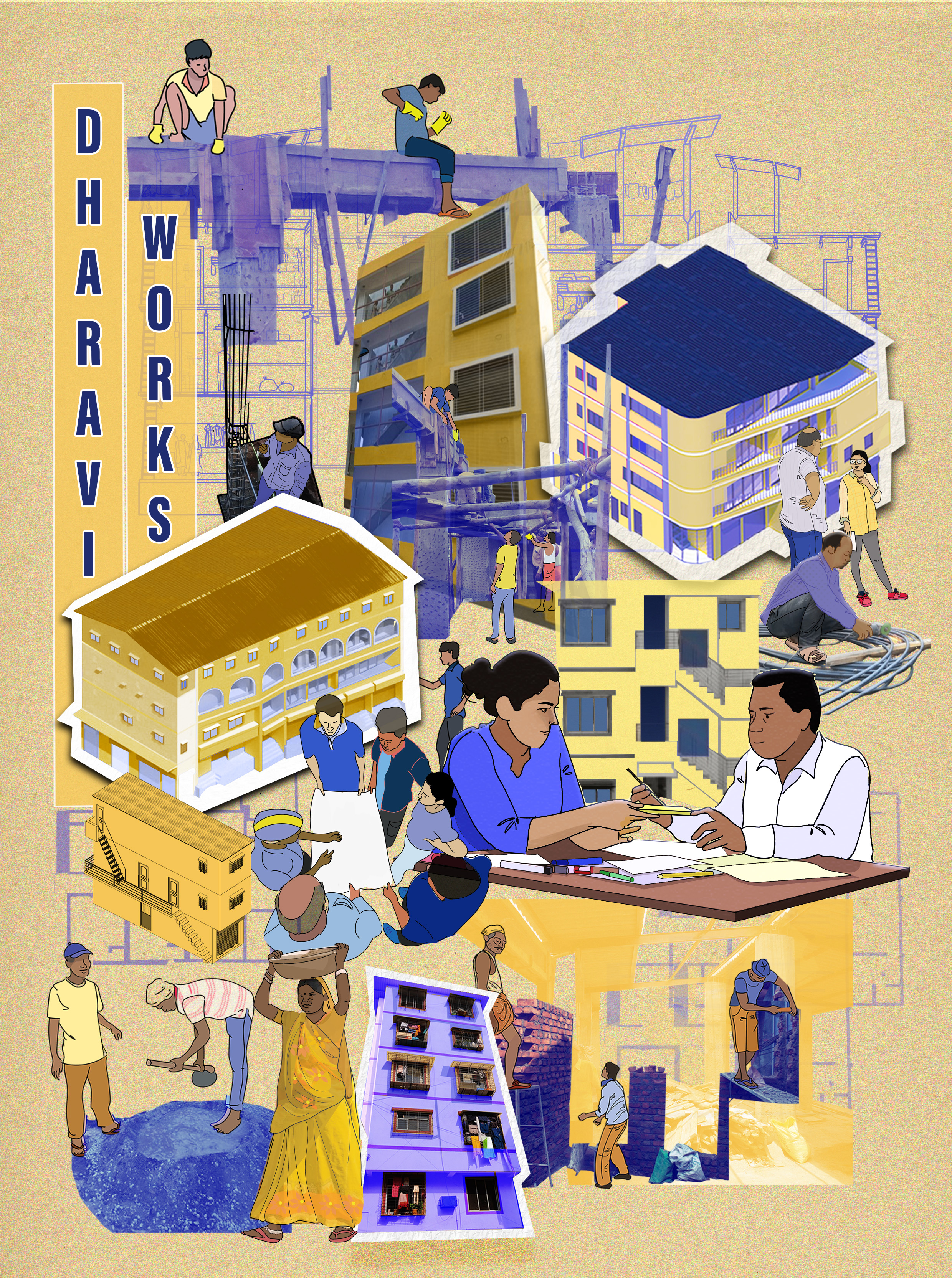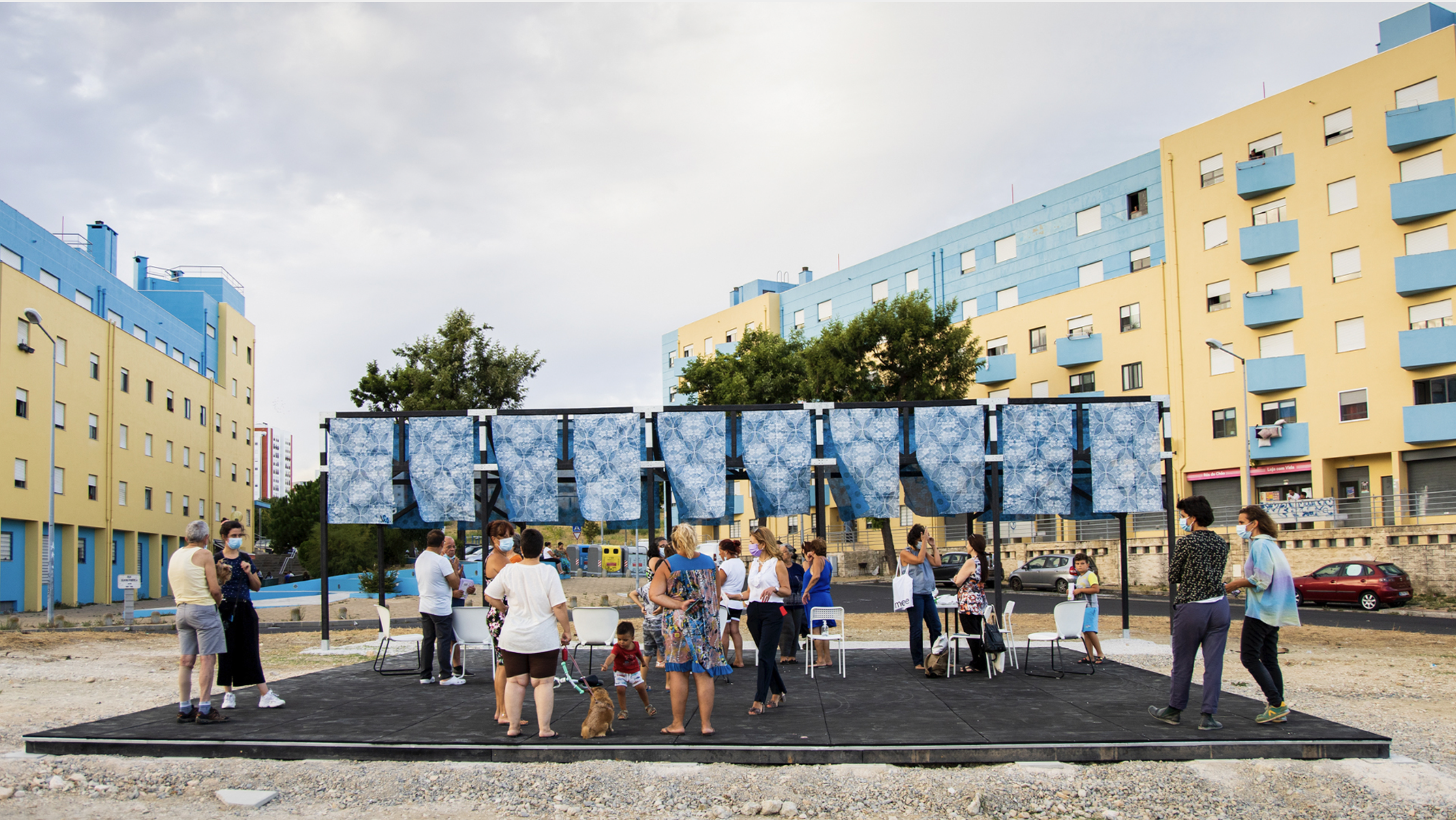Yehuda Safran - Internationalism in Architecture
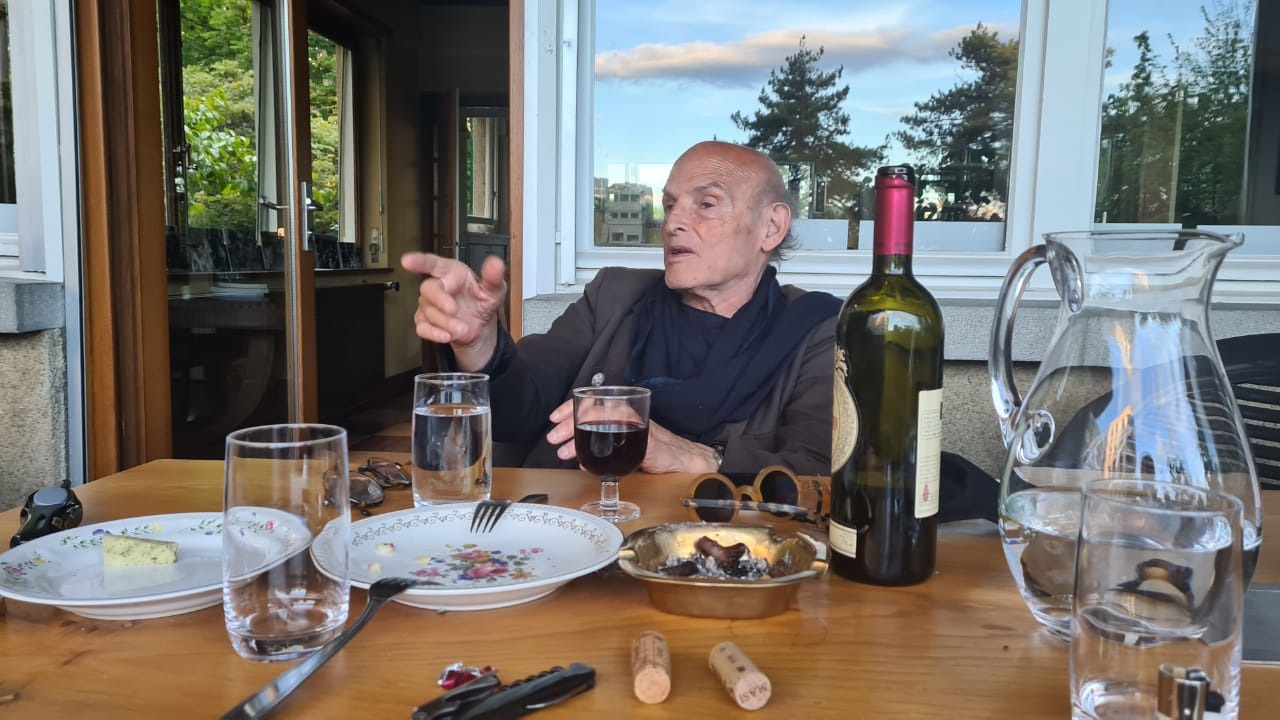
Yehuda Safran - Internationalism in Architecture
Introduction
Yehuda was part of the urbz journey from the beginning. We met the first time in Taiwan. He came for the Urban Typhoon Workshop in Tokyo in 2006 and the one in Dharavi, Mumbai in 2008. Since then, he has come for several workshops, including Breaking Ground and the Versoix workshop. He is now part of the new phase of urbz’s evolution and is the first to take up this residency for nomadic urbanities. Yehuda was the first guest resident in the Urbanology programme, which urbz has initiated with the Terra & Casa fondation at its Geneva space.
On June 3rd he responded to new projects that we are doing in Geneva, with international organisations and the Fondation Terra & Casa. The strongest asset of the city has always been to be so diverse and welcoming to an international community. This dimension connects this lecture to architecture, of course, as well. What follows is a retranscription of his talk on internationalism in architecture in the context of Geneva.
Yehuda Safran:
Thank you very much to urbz and Terra & Casa for this invitation to the villa, as part of the Urbanology Initiative.
Yes – it has been a long voyage and involved going to many places. Certain threads, however, can be traced through this journey that connects everything.
Now – the word international in architecture opens up a very complex issue. For most it refers to the International Style which was the invention of this great American architectural historian Henry Russell Hitchcock and the important, if deeply reactionary and cynical post-war continuator of the Miesian lesson, Philip Johnson, who together put an exhibition under the title International Style in 1932 at the MoMA NY (or the ‘dirties’ as a friend of mine from Berlin would call those years)
But in fact, about a decade earlier in 1928 the CIAM had already been created. CIAM as you know is the Congress Internationaux d’Architecture Moderne. So in fact they didn’t invent anything. It was already initiated by Corbusier and Sigfried Giedion and other Swiss characters internationally. The main work was in Harvard and he was a key figure in several versions of it. There was a grand lady, Helene de Mandrot who organized the congress in her own castle in Sarraz. This was, from an urbanistic point of view, an important initiative. CIAM individually and collectively made the template for every important city in the western world. They did not go outside the west, except for Latin America.
There were plans for cities in Rio etc. Corbusier was very much involved in this internationalism and in his version of it.
Interestingly enough in the 10th Congress, the younger generation revolted and Corbusier felt this revolt was positive. The younger architects did not accept the ideas of the original CIAM as something positive. Indeed this group came to be known as Team X and it was Team 10 because this event took place in the X edition of the Congress in the 50s in Bagnols-sur-Cèze and many people you are familiar with began to develop their names/styles around this time. Like the Smithsons, Aldo van Eyck, Giancarlo de Carlo in Italy, they were important members of this group. One of the key deviations of Team X was on the issue of urbanism. What were its main parameters?
As you know the original CIAM established four basic parameters: Work, Leisure, Circulation and Habitat. For Team X, many important deviations were left out and suppressed. They felt that life consisted of many more parameters that were equally important and there was no need to adhere to these prefabricated categories.
But the issue of internationalism is much older. Already in Medieval times - and most people don’t realize this - the cathedrals were not only a local affair - however, one defines local - but in fact, they were connected to groups of travelling masons and geometers, who went from country to country.
Thus, most of the important cathedrals, whether in France or in what would later become Germany, were not only built by local forces but also an international group of masons and geometers.
So much so that, in some sculptural works in the southwest of France, to be sure, mainly in the Romanesque period, you can detect the work of carvers, which may well have come all the way from India, and as Henri Focillon pointed out, certainly from Armenia, in terms of their style of carving. And that is remarkable. Of course, there have been many discussions over the years among art historians and others of precisely the characteristics of this so-called ‘international’.
The term nation is very modern. It was – shall we say – most fruitful in the 19th century. And the most important moment in the history of the 19th century connected to this term is the uprising of 1848. It’s called the spring of the Nation (this was also by the way why the Arab Spring was called as such. It was to remind people who were intellectually well informed, of the story of 1848. Like the Arab Spring, the 1848 revolution was a total failure. But the consequences of it were long-lasting. At the time though, the revolt was put down, and not much came out of it.
In the German-speaking world, many towns and cities were a part of the empire of kingdoms and principalities and so on, and they revolted. One of the great theoreticians of architecture took part in it – was Gottfried Semper – whose book you probably know was called Der Still – published in English as On Style.
And Gottfried Semper together with Richard Wagner participated in the 1848 event, at a moment in Wagner's trajectory which seems too alien to his later reputation, as it is thoroughly leftist in orientation. Gottfried Semper had to escape, to run away from the event. After the end of the revolution, Wagner escaped to Switzerland while Semper hoped to get to America.
Semper was already on his way, he got as far as Le Havre on the Atlantic Harbor in France, with the idea of taking a boat to America. But by the time he got there, he was invited by some people in London. Not only was he invited but also he participated in the preparation of the Crystal Palace exhibition of 1851. (Incidentally, the same day that Melville’s Moby Dick was published, a purely symbolic conjuncture).
Gottfried Semper - because of his encounter with design and architecture in England at the time - became very interested and preoccupied with the question of design and the questions of how style developed and so on. He was in touch with Henry Cole, the head of the committee in the 1851 exhibition. This helped develop his understanding. Eventually, he was the first one to challenge the idea of historical style, though in his own work as an architect he remained very historicist, meaning that he was not necessarily using neo-classical elements in the way other people were.
Though he did use the vocabulary of classicism in a different way, through using Neo-Renaissance, especially in his most important work, which is in the Natural History Museum and the Museum of Art in Vienna. The two buildings that are parallel to each other just outside the Ring, are kind of neo-renaissance. They are fine buildings but not terribly great architecture, and of course the HQ of the ETH in Zurich is by Semper. It is interesting that Semper was the chairman of the Jury – of the project but he was unhappy with all the proposals and that’s why he did it himself. And you have the HQ of ETH in Zurich by Semper. All this is very interesting because he went on to write the most important dissertation on style we have, anywhere in the world, which is his book on style. One of the most important features of this book is that he is not taking the historical style for granted, but on the contrary, it is ahistorical and based on very detailed material and analysis on the features of style. His basic argument is the style is not based on any kind of simple ideology, or cultural tendency as much as on the way of making. He distinguished four fundamental ways of making, which was to do weaving, with the earth, with ceramic and these ways of making, determined the style which eventually moves from how you make something, to something that is only portrayed. For example, he talks about the vegetation on the columns in ancient Egypt, and Greece came from the use of plants and vegetables, which imprinted its shape and forms, which then became something in stone and wood and so on, This is a good example and another example is when he looks at different shapes – for example of the different vases and asking why they are different, and connecting it to the different uses. For example, some vases are used to scoop water from the river and others are used to scoop water from the wells. Vases linked to wells will have one shape and those from the river will have another. He explained why these shapes are different and he applied this logic to almost everything, and in 1851 he saw the Bamboo Carib Hut, and unlike the Classical and Neo-classical idea of the hut which was made from bentwood and so on, he saw the Caribbean hut and thought that this was most likely to be the origin of architecture. For him the origins of architecture are there to protect oneself, from fire, you need to use textile to protect yourself from fire, and to use textile you need to use some structure, and the structure becomes the house, becomes architecture. That’s how he believed that the centre of architecture is connected to elements such as fire, as earth, then textile, and cladding and indeed with textiles. Cladding- bekleidung, (the German word) for it, which is of the same root as clothing (kleidung) generates analogies that are important for architecture. As we clad ourselves, we clad our buildings. The building itself is like a cladding. This is all-important because in the 19th century there were two strong tendencies, one connected to identity, connected to the idea of naissance - a place of birth, and the other, equally powerful, but much more abstract and connected to more speculative ways of thinking.
These emerged from the minds of the greatest theoretician that ever lived.
Then there were others. Like Eugene-Emanuel Viollet Le Duc (1814-1879) in Paris who was much more concentrated on what he knew of the Gothic in France compared to Semper. Semper already began his life with a searching mind, he began his life as a mathematician, and he studied with Friedrich Gauss. Who was one of the greatest mathematicians who ever lived, from India to Kathmandu to wherever; there was never a greater mathematician, arguably than Gauss. But his practical mind (Semper’s) was to study mathematics in order to become an artillery officer. Then he gave up on the idea of being an artillery officer and started studying architecture, but with his knowledge of Mathematics. His foundations were in mathematics to study with Gauss in Göttingen. Then he made his way to Paris and started studying architecture in Paris. It was not that he was ignorant of architecture in Germany. When he was in Paris, in fact, he came across the debate on the polychromic aspect of antique sculpture and architecture. He took the trouble to go all the way to Schinkel in Berlin – to share with him the result of the inquiries about polychromic architecture taking place, especially, among the French architects. He was one of those who were convinced and he himself travelled to Athens, to Sicily, to look at these ancient Greek temples, both classical and archaic, and he also concluded that the bits and pieces and fragments of colours that they did find, convinced him that they had used colours, there was extensive use of colours, and he went to Schinkel in Berlin to inform him about these discoveries. We know this thanks to a letter from Schinkel to Semper, in which he thanks Semper for keeping him informed.
I tried to show you how the questions of the national and international are very very loaded. And indeed, even in neoclassicism there was already a question of nationality, and there was a difference between neoclassicism based on Greek models and neoclassicism based on Roman. When the French used Greek, the Germans would use Roman, to establish their own national difference. Even in reference to classical sources, there were these funny things going on.
Come to think of it, even Plato in his time was complaining about the realism of the architects and painters in his time and criticized them for not sufficiently following the Egyptian example of abstraction. So, if you think of it, even in terms of not conforming to the 19th and 20th centuries such conversations have always been part of discussions ever since. There is always this tension. In the 20th century, I would say unfortunately, the tendency of the 19th century became much more a force – in the 20th century.
What happened here was the result of the war. The idea of the League of Nations was really a kind of – in colloquial terms, a pipe dream.
Because Woodrow Wilson had this fantasy that the all-powerful USA could impose something like American-style order in Europe - the League of Nations was an embodiment of this pipe dream.
We know it was a pipe dream because in a relatively few years it came to an end with a very abrupt session due to the Second World War. I was just reading about the life of John Maynard Keynes, the illustrious economist, and his work grew out of a critique of the Treaty of Versailles. Goldfinger was a young man in the 20s when Adolf Loos’s ideas for Moghuls Indian or not? Well, the fact is that the Mughals didn’t build a neighbor in Vezelay, it is a pilgrimage center in the country 100 km south of Paris.
That book was in the east and it was the only book he read on the way to Chandigarh. It is clear that Chandigarh received an infusion of Bataille’s thinking this way. Le Corbusier’s ‘The Poem of The Right Angle’ was composed on that trip. Bataille, in his book written in the aftermath of the Second World War, is the greatest book on the Gift since Marcel Mauss' The Gift. Essai sur le don; forme et raison de l'échange dans les sociétés archaïques is a 1925 essay that is the foundation of social theories of reciprocity and gift exchange.
The great architect does not only bring something (to his project) but that (project) is also something that changes him. Very much so. Not in a simple chameleonic way of taking a different color or coat, but much more profoundly and that is true in many instances.
You can see it again and again. So ultimately, I would say that the degree to which a national style exists (well if it does exist, but it is not necessarily all-important) and when the work is going far enough, or has gone far enough, then there are no longer these distinctions. Or these distinctions are no longer applied.
This was one of the reasons why I was often unhappy with my great colleague and friend Kenneth Frampton, advocating critical regionalism. The painter was a man called Frantisek Kupka. And Mach, who was a professor of Physics at Charles University, which was the German-speaking University in Prague, certainly inspired Kupka. This is the Mach who gave the theory and the measure of the speed of sound. He was the first physicist to measure the speed of sound. But his epistemology was so firm that when the young Einstein published his paper on relativity – Mach was very much against it because he had no empirical proof in that paper. There was no reference to anything that the senses could verify or could measure. It is true that originally very few people understood Einstein’s paper and that he was understood and appreciated only about 15 years later when Arthur Eddington, a British astronomer went to someplace in Africa… in east Africa, from where one could observe at the time the eclipse of the sun and one could then take photos of nearby objects. The beams of light that were close enough to the sun effectuated by the power of the sun’s weight, would tilt the beams of light… and that was the time of the empirical proof of relativity theory that changed the equation, the public reception, in the sense that this Einstein you know, with the tongue out - happened only after there was empirical proof and not before!
Now there was in 1908, an art historian Wilhelm Worringer (1881-1965) like Mies, he was born in Aachen, who published his PhD dissertation: Abstraction und Einfühlung. As you know how it is in German, where every possible word that you can find that can be translated into German, they translate it. In Germany, you don’t say empathy, you say Einfühlung. Wölfflin was a student in Basel… he was a Swiss fellow and a student (in Basel) of Jakob Burckhardt who was the most important art historian on the renaissance and also about the age of Constantine because he thought of his times was parallel with the age of Constantine…the advent of Christianity and the end of the ancient world. Burckhardt was teaching in Basel at the same time that young Nietzsche was teaching Greek philology, and the two of them became very What did Misse see in Hellerau where he went every weekend to meet Ada? He saw Appia! Except, as it often happens with many great artists, it took him some time to digest… It took him ten years in which (he) does not do abstraction, he does more of a kind of late classicism in style – not always great, yet compelling nonetheless.
Look at this drawing! When you see this drawing, you can’t help but realize that it was one of his most important sources of inspiration. So you see, you have a triple kind of thing- you have Alois Reihl who is a philosopher in Berlin, who teaches Schopenhauer… and Nietzsche—you have Heinrich Wolfflin, who teaches Abstraction, and you have Appia in Hellerau and the fifth one is Mies…with his abstraction who comes into the foreground only ten years later.
First of all, the school of Dalcroze was designed by one of the very important architects of that time, Heinrich Tessenow. Tessenow was a teacher of Speer—Hitler’s architect—Tessenow was a ‘Modern’– but a kind of subdued Modern, who used steel very much. With neoclassical vocabularies, look at this – this is in Hellerau, designed by Tessenow – you can see the columns and everything. Very neo-classical but, watered down as you can see…a bit more abstract version…
So I spoke for how long now? Almost an hour, no?
Questions
Is the international therefore abstract?
Well it is one solution…for many countries. In Europe, you know, after every war, there is the problem of the monuments, as you know…
Would they have an iconography compatible with Protestant ethos? Would they have one more linked to the Catholic tradition?
Kyna Laski, she told me the story of how her father was employed by Wallace K. Harrison – who did many good things in New York – but never managed a name for himself as he was never a great architect. But he was intelligent, intelligent enough to use good architects. The questions of internationalism and nationalism are huge questions.
It is almost paradoxical to call something the international style, no?
Suddenly it makes no sense. Except if it’s an abstraction. Therefore it's universal because it's critical, not regional.
If you ask me about the future, I hope the future will help us…to rid ourselves of this stupid idea of a nation. It is really not very helpful to us. We know that people are different. They get together they acquire certain habits that are in common and that is connected
with a certain piece of land but first of all, this never happens for terribly long…most people you associated with Europe now came from somewhere else. Maybe not yesterday, but 2000 years ago or more…and the absurdity of claiming something extra because of this land or that land is absurd. And I think that many of the tribulations that we have seen in the last 120 years have to do with these kinds of claims, which I think are rather absurd.
Question of Diversity
One person said we don’t need to represent diversity since we are all diverse already. But we need to forge a sense of belonging and everyone needs to feel a sense of comfort and belonging. We need to develop a common denominator. The term nation will lose its hold on us and people will think less in terms of nation…but in other terms.
We are many things simultaneously. Nation was an unfortunate choice. Of course, once it was a positive force in the middle of the 19th century. Then it diminished in value and became more negative. Today people have difficulties because of this crazy idea of a nation.
It is complicated. We still don’t have any other way of holding to an identity but territory. Unless of course, you have the Nansen passport. Otherwise, you have no identity, even if this category is quite problematic in any case.
This lecture was delivered by Yehuda Safran on 3rd June 2021 in Geneva and transcribed by Rahul Srivastava. Minor edits have been made for clarity.
